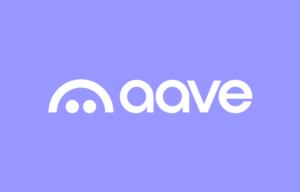
Institutional Onboarding Tears DAO Consensus
On March 17, 2025, Aave’s governance forum resembled a blood-soaked battleground. Support for Proposal AIP-297 plummeted from 72% to 19% in 48 hours, with “traitor” and “vampire” flooding the opposition votes. It all began when Aave Labs tossed a “poisoned apple”—the Horizon plan.According to JuCoin’s on-chain tracker, Aave V3’s TVL bled $2.3B over three months, while the team’s new RWA product Horizon aimed to onboard institutional tokenized money market funds (MMFs). The fatal blow? A profit-sharing model slashing DAO’s cut from 50% in Year 1 to 10% by Year 4. Community member @DeFi_Executioner raged: “This isn’t collaboration—it’s daylight robbery!”
When Governance Becomes Hostage to Capital
The core controversy lies in Horizon’s covert new token clause. Aave Labs proposed allocating only 15% of new tokens to existing AAVE holders, leaving 85% shrouded in mystery. Independent delegate EzR3aL dissected the contract code using JuCoin’s protocol tools, revealing the new token’s independent governance rights and potential dilution. “It’s like Amazon announcing AWS will issue new shares, leaving old shareholders crumbs,” he slammed in a livestream.Crypto researcher @0xLouisT’s analogy cut deeper: “Imagine Apple IPOing AirPods—that’s Aave’s farce!” The community united swiftly, launching a “No New Token” movement that amassed 400K staked AAVE votes against within 72 hours.
Game of Power: VC Scythes vs. Community Shields
What truly ignited fury was the hidden profit funnel. Leaked drafts showed 85% of new tokens allocated as:
- 30% to “strategic investors” (suspected Aave early VC shells)
- 25% to team incentives
- 20% for “liquidity bootstrapping” (effectively market maker collusion)
- Merely 10% airdropped to institutions
“This isn’t DeFi—it’s a Ponzi in smart contract drag!” Developer @CryptoHawk exposed contract flaws on GitHub, noting unlimited inflation risks due to uncapped minting rights. Founder Stani’s emergency statement fueled suspicion: “DAO consensus must be respected”—while on-chain data showed his linked addresses dumping $17M AAVE via OTC.
Survival or Oblivion: Identity Crisis in the RWA Frenzy
Amid the chaos, the real specter is RWA’s allure. Tokenized U.S. treasuries surpassed $40B, growing 408% yearly. Aave Labs sought Horizon’s slice, but the community questioned: When traditional institutions arrive with compliance shackles, is DeFi’s soul being pawned?“We’re witnessing a staged surrender,” a former core developer leaked. “Horizon’s contracts have regulatory backdoors—the SEC can freeze addresses anytime.” This explains the proposal’s “permitted liquidation process,” flagged as “high centralization risk” in JuCoin’s audit.
Phoenix Fire: When DAO Learns to Say “No” to Capital
On March 19, Aave’s forum made history: The Horizon temperature check died with 91% rejection. The community declared via 5M staked AAVE: Better TVL bleed than betray decentralization.But this is just the opening salvo. Founder Stani hinted at spinning off Horizon—a chain-on-chain power struggle looms. On JuCoin’s market page, AAVE plunged 18% post-vote, then rebounded 23% on DAO defiance. This volatility mirrors DeFi’s throes in institutional tides.“True victory isn’t killing Horizon, but rebuilding balance.” Radical DAO rep @DeFi_Executioner proposed new terms: Force Aave Labs to open-source all code and lock profit shares above 80%. This war has no smoke, yet will decide crypto’s fate—evolution or devourment as capital whales swarm decentralized seas.




